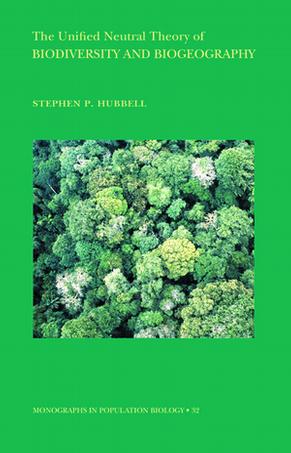欢迎来到相识电子书!
标签:Hubbell
-
The Unified Neutral Theory of Biodiversity and Biogeography
Despite its supreme importance and the threat of its global crash, biodiversity remains poorly understood both empirically and theoretically. This ambitious book presents a new, general neutral theory to explain the origin, maintenance, and loss of biodiversity in a biogeographic context. Until now biogeography (the study of the geographic distribution of species) and biodiversity (the study of species richness and relative species abundance) have had largely disjunct intellectual histories. In this book, Stephen Hubbell develops a formal mathematical theory that unifies these two fields. When a speciation process is incorporated into Robert H. MacArthur and Edward O. Wilson's now classical theory of island biogeography, the generalized theory predicts the existence of a universal, dimensionless biodiversity number. In the theory, this fundamental biodiversity number, together with the migration or dispersal rate, completely determines the steady-state distribution of species richness and relative species abundance on local to large geographic spatial scales and short-term to evolutionary time scales. Although neutral, Hubbell's theory is nevertheless able to generate many nonobvious, testable, and remarkably accurate quantitative predictions about biodiversity and biogeography. In many ways Hubbell's theory is the ecological analog to the neutral theory of genetic drift in genetics. The unified neutral theory of biogeography and biodiversity should stimulate research in new theoretical and empirical directions by ecologists, evolutionary biologists, and biogeographers. Table of Contents: Preface ix 1.MacArthur and Wilson's Radical Theory 3 2.On Current Theories of Relative Species Abundance 30 3.Dynamical Models of the Relative Abundance of Species 48 4.Local Community Dynamics under Ecological Drift 76 5.Metacommunity Dynamics and the Unified Theory 113 6.The Unified Theory and Dynamical Species-Area Relationships 152 7.Metapopulations and Biodiversity on the Metacommunity Landscape 202 8.Speciation, Phylogeny, and the Evolution of Metacommunity Biodiversity 231 9.Sampling, Parameter Estimation, and the Generality of the Unified Theory 281 10.Reconciling Dispersal-Assembly and Niche-Assembly Theories 319 Literature Cited 347 Index 371
热门标签
下载排行榜
- 1 梦的解析:最佳译本
- 2 李鸿章全传
- 3 淡定的智慧
- 4 心理操控术
- 5 哈佛口才课
- 6 俗世奇人
- 7 日瓦戈医生
- 8 笑死你的逻辑学
- 9 历史老师没教过的历史
- 10 1分钟和陌生人成为朋友

